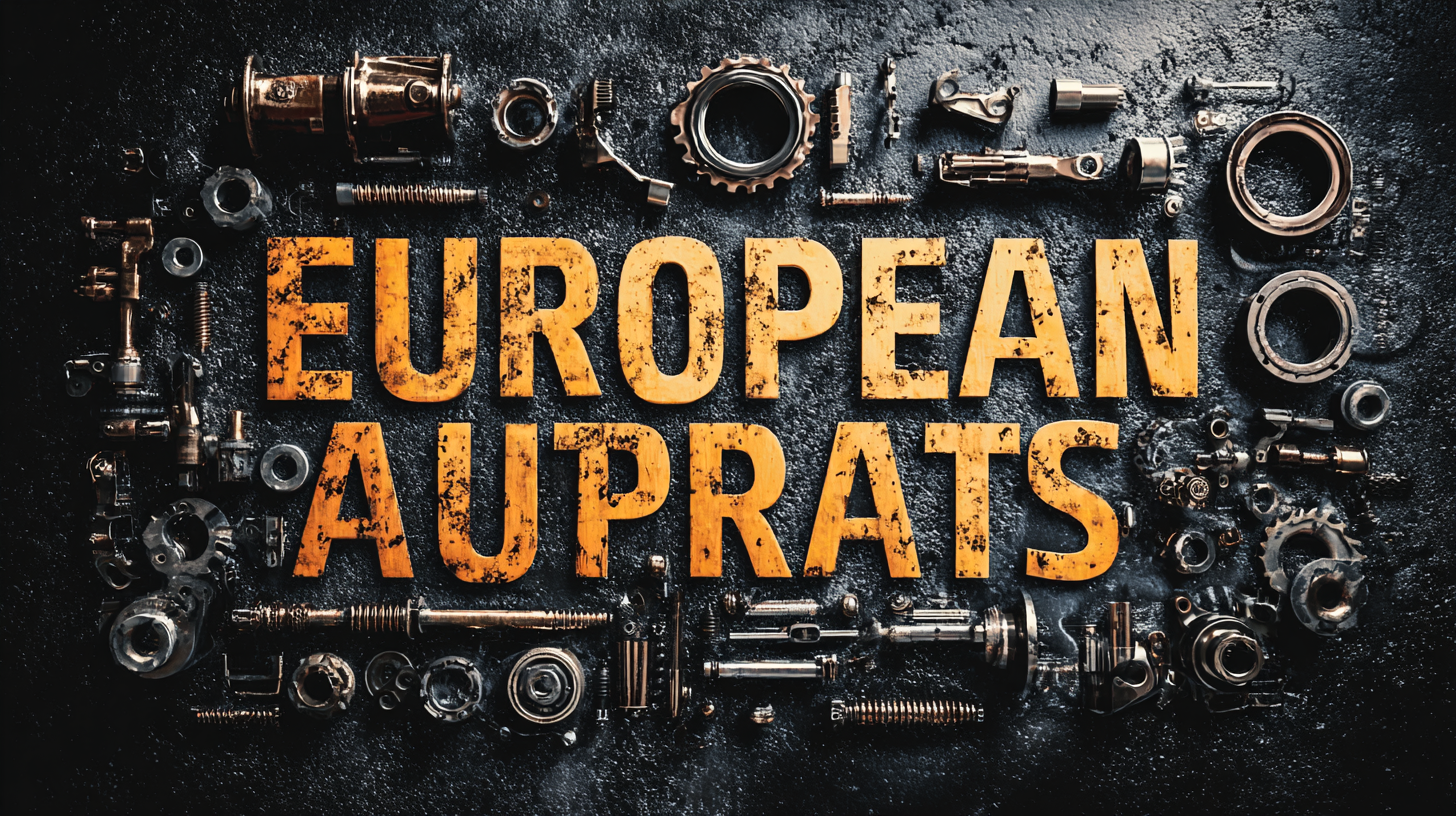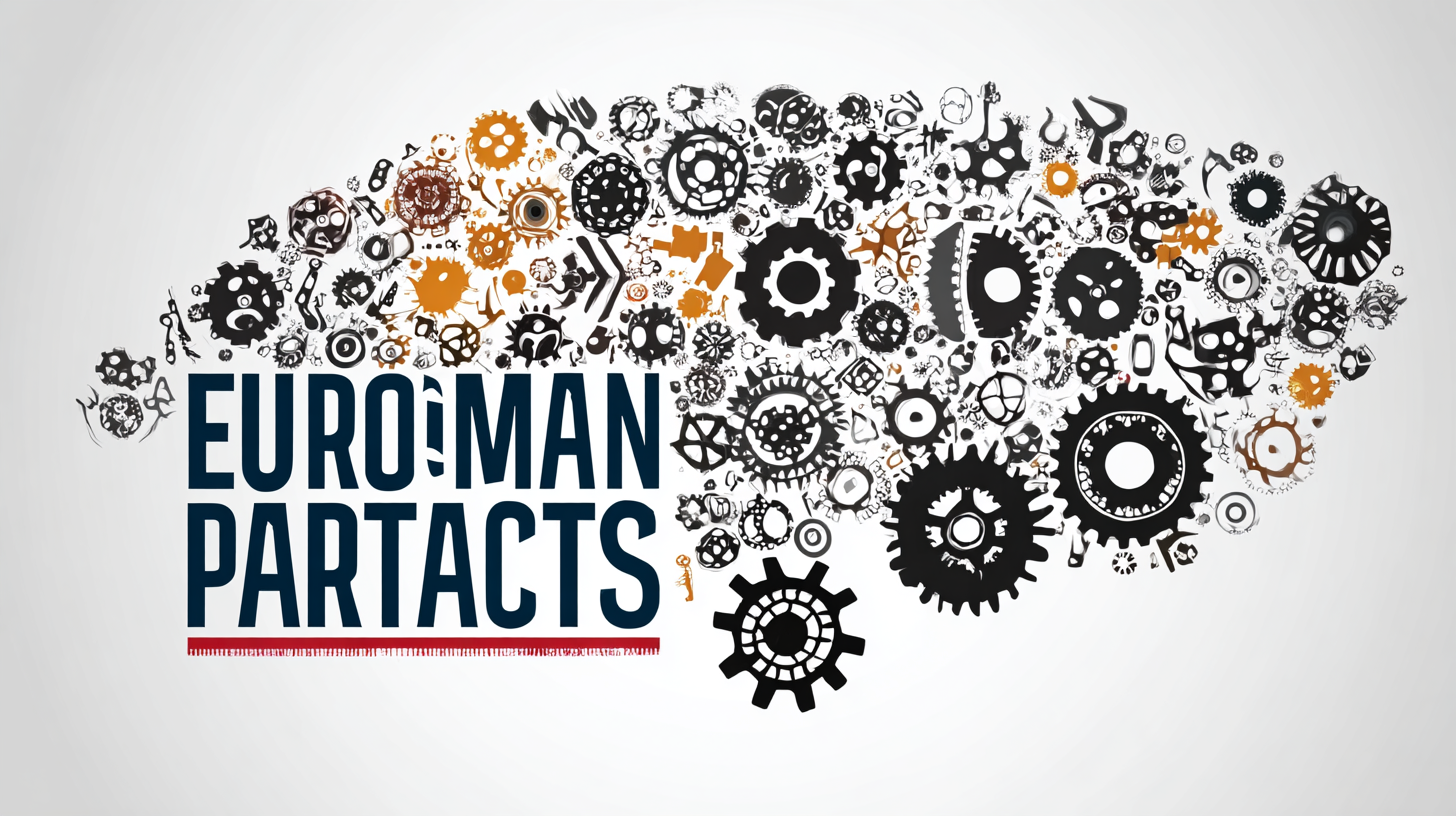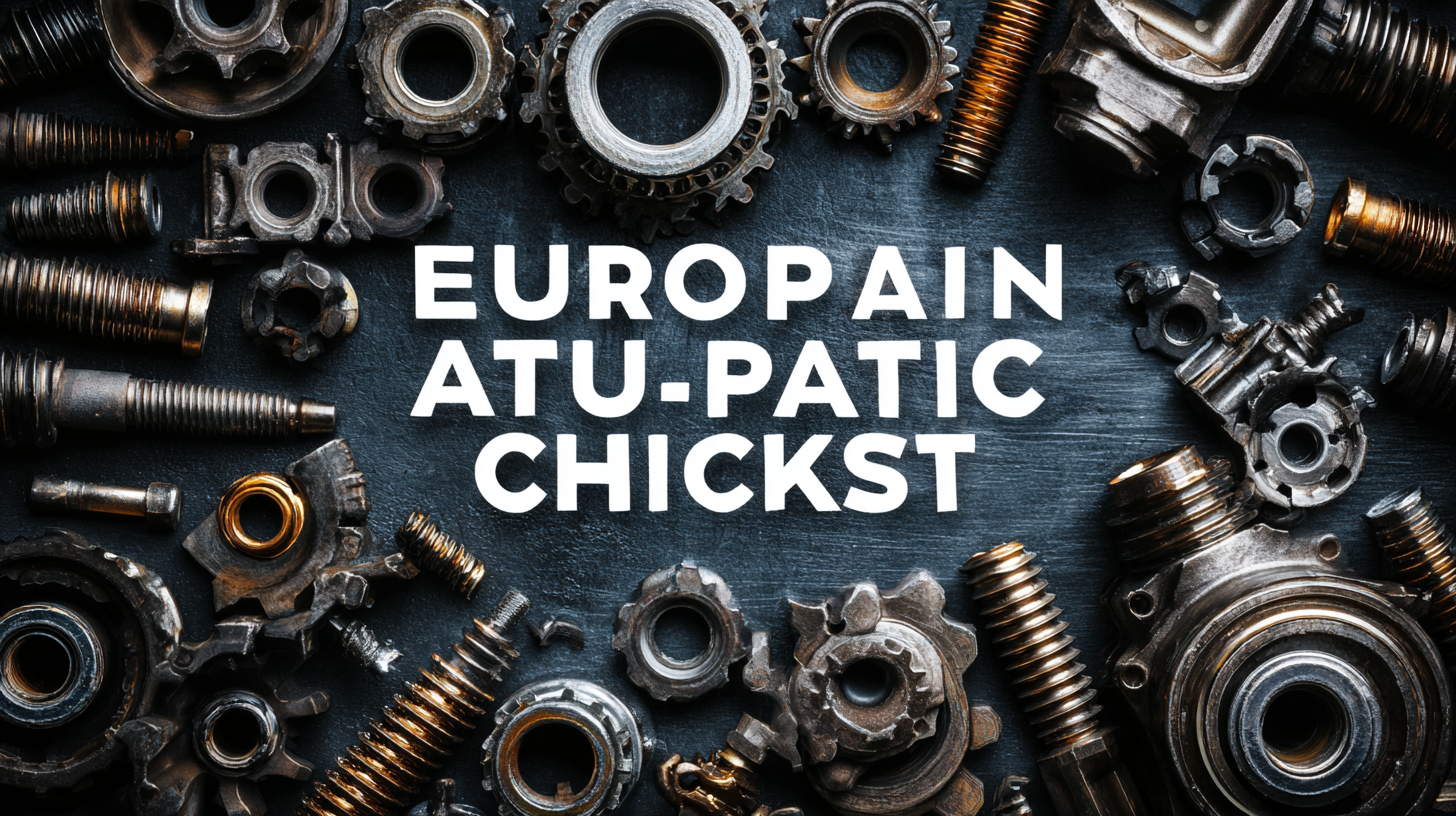In the competitive landscape of the automotive industry, sourcing high-quality European automotive parts is crucial for manufacturers and suppliers aiming to ensure reliability and performance.
According to a report by PwC, the European automotive market is projected to grow by 4.9% annually, reaching a value of €600 billion by 2025, highlighting the significant demand for top-notch components. Furthermore, a study by McKinsey indicates that 75% of consumers prioritize quality over price when purchasing automotive products, underscoring the necessity for companies to carefully evaluate their supply chain strategies.

With the global reputation for excellence in manufacturing, particularly from countries such as China, it is imperative for industry players to leverage comprehensive insights and robust checklists when sourcing European automotive parts. This blog aims to provide that essential guide, ensuring that businesses make informed decisions in an ever-evolving market.
Sourcing European automotive parts can be a complex process due to various common issues that arise throughout the supply chain. One prevalent problem is ensuring the quality and authenticity of parts, especially when navigating a market filled with counterfeit components. Manufacturers often face the challenge of verifying that suppliers adhere to stringent quality standards, which can lead to costly production delays if subpar parts are acquired.
To mitigate these risks, consider implementing robust vendor vetting processes. Start by conducting thorough background checks and requesting certifications that indicate compliance with industry regulations. Regular audits of suppliers can also help maintain high standards, ensuring that you receive only the best quality parts.
Another significant issue is supply chain disruptions, which can stem from geopolitical factors, transportation delays, or increased demand. To address this, diversify your supplier base to avoid over-reliance on a single source. Establishing relationships with multiple suppliers across different regions can enhance your resilience against unforeseen disruptions. Additionally, maintain open communication with suppliers to keep abreast of potential issues that could affect your sourcing strategy.
When sourcing automotive parts from Europe, understanding quality standards and compliance issues is paramount to ensuring both product reliability and safety. European regulations, particularly those set by the European Union, mandate stringent compliance with standards such as ISO 9001, which governs quality management systems, and IATF 16949, specifically tailored for automotive parts. These standards not only enhance consumer safety but also streamline production processes for manufacturers, thereby significantly reducing the risk of defects and improving overall performance.

Moreover, it's essential to be aware of the legal frameworks surrounding automotive parts, including REACH and the EU Directive on End-of-Life Vehicles. REACH ensures that chemical substances used in manufacturing are safe for human health and the environment, while the End-of-Life Vehicles directive pushes for sustainable practices in the disposal of automotive components. Thoroughly verifying supplier certifications and conducting regular audits can help mitigate compliance risks. By prioritizing these quality standards and compliance issues, companies can foster trust with customers and create a competitive edge in the European automotive market.
The European automotive industry is currently facing significant supply chain challenges, particularly as it navigates a pivotal moment marked by technological advancements and increased competition. Key issues include stricter emissions regulations and post-pandemic disruptions that have led to shifting automotive trade patterns. While the market is expected to rebound, transitioning from net exports to net imports demonstrates the need for agility in sourcing parts and materials.
Tip: Focus on establishing strong relationships with local suppliers to mitigate long-distance shipping risks. Exploring nearshoring options can lead to reduced lead times and lower transportation costs.
Furthermore, the European Commission's plan to enhance the sector's global competitiveness emphasizes the importance of sustainability and technological innovation in overcoming these hurdles. As the automotive parts remanufacturing market is projected to grow at a CAGR of 5.4% from 2025 to 2032, companies must prioritize eco-friendly practices and adapt to circular economy principles to capitalize on this trend.
Tip: Regularly review your supply chain strategies and encourage collaboration among stakeholders to improve resilience against disruptions. Implementing control tower systems can enhance visibility and assist in swift decision-making.
When sourcing automotive parts in Europe, price fluctuations can significantly impact your overall budget. Understanding market dynamics is crucial. Prices can vary due to factors like supply chain disruptions, currency exchange rates, and seasonal demand. Staying attuned to these variables allows you to anticipate changes and make informed purchasing decisions.
Tip: Regularly monitor industry reports and market trends. By subscribing to automotive newsletters or joining relevant industry forums, you can gain insights into upcoming shifts that might affect pricing. This proactive approach will enable you to adjust your strategies accordingly.
Effective cost management strategies are essential for maintaining profitability in a fluctuating market. Consider implementing just-in-time inventory systems to reduce holding costs and optimize cash flow. Additionally, developing strong partnerships with reliable suppliers can provide leverage during negotiations, ensuring you receive competitive pricing even in volatile conditions.
Tip: Diversify your supplier base to mitigate risks associated with dependence on a single source. This strategy not only fosters competition among suppliers but also helps you secure better deals as market conditions change.
In 2023, the e-commerce logistics market is projected to reach a staggering $319.52 billion, with an estimated compound annual growth rate (CAGR) of 22.49% from 2024 to 2031. This rapid growth underscores the increasing importance of effective inventory management solutions, especially in the automotive parts sector, where sourcing and delivering products on time can significantly influence customer satisfaction and business success. For companies engaged in automotive parts sourcing in Europe, a robust and transparent supply chain has become crucial for building trust and ensuring timely delivery.
To navigate this competitive landscape, it is essential to implement advanced warehouse management systems (WMS). With the warehouse management system market exceeding $3.5 billion in 2023 and forecasted to grow at approximately 12% CAGR through 2032, businesses that leverage automation and innovative technologies will gain a substantial edge. By focusing on optimizing inventory levels and streamlining processes, companies can not only maintain oversight of their stock but also respond more swiftly to market demands. As the automotive industry continues to evolve, those prioritizing effective delivery and inventory management are well-placed to thrive amidst changing consumer expectations and regulatory requirements.

